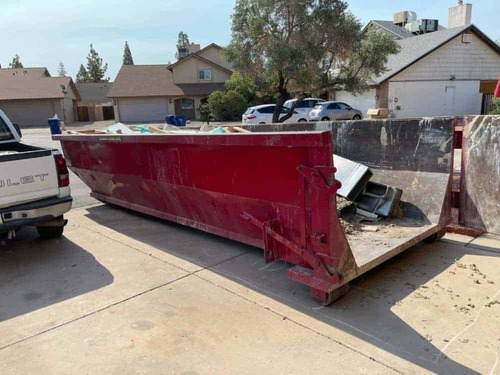Plotters are essential tools for industries that require large-format prints, high precision, and reliable speed, like architecture, engineering, and design. Multiple types of plotters are available, each differing in printing speed and accuracy, making some plotters better suited to specific tasks than others. This guide will help you understand how each plotter type performs in terms of speed and precision, giving you valuable insights for choosing the one that best fits your needs.
1. Inkjet Plotters: High Precision, Moderate Speed
Inkjet plotters are known for their exceptional print quality and detail. Using small nozzles to spray ink onto the media, they create vibrant colours, intricate details, and smooth gradients, ideal for design and art-focused projects. Inkjet plotters are versatile and work well on various media types, from plain paper to glossy materials.
Speed and Precision
Inkjet plotters are precise and perfect for colour-rich designs and complex images. However, they operate at a moderate speed, especially for larger, full-colour prints. This slower pace can be a drawback if you need high-volume outputs quickly. Their balance of high detail and moderate speed makes them a go-to choice for projects prioritising quality over speed.
2. Laser Plotters: Fast and Efficient for Monochrome
Laser plotters use laser technology and toner to produce sharp, high-contrast images. Known for their speed and efficiency, laser plotters are often used for monochrome documents and technical drawings, making them a popular choice in engineering and construction firms where time efficiency is essential.
Speed and Precision
Laser plotters are highly efficient and capable of handling large print volumes in a relatively short period, making them one of the fastest options available. However, while they are precise in producing sharp, clear lines, laser plotters may lack inkjet plotters’ colour depth and gradient control. Laser plotters offer a reliable solution without compromising line clarity for projects requiring monochrome accuracy at a fast pace.
3. Pen Plotters: Exceptional Line Accuracy, Lower Speed
Pen plotters use mechanical pens to draw lines on the media, offering unparalleled accuracy for line-based drawings. This method makes them a favourite in fields where precision is critical, such as engineering and architectural blueprints. Pen plotters work well on various media, including drafting paper, vellum, and film.
Speed and Precision
Pen plotters excel in precision, as each line is carefully drawn by the mechanical pen, ensuring clean, sharp details. However, they are generally slower than inkjet or laser plotters because each line is individually traced. This slower speed can be a limitation for projects with tight deadlines, but pen plotters provide unmatched precision for those needing highly accurate line work.
4. Thermal Plotters: Durable Prints with Steady Speed
Thermal plotters utilise heat to transfer dye or wax-based ink onto the media, creating durable and weather-resistant prints. These plotters are particularly useful for outdoor applications, like signage or maps, where prints must withstand environmental elements.
Speed and Precision
Thermal plotters work at a steady, moderate speed and are often faster than pen plotters but slower than laser plotters. They offer decent precision, especially for projects that don’t require intricate colour details. Thermal plotters are effective for producing durable prints, though they may lack the high-resolution detail in inkjet or laser plotters. They balance durability with speed, making them suitable for functional, outdoor-ready prints.
5. Cutting Plotters: Accurate Cuts, No Printing Speed
Unlike traditional plotters, cutting plotters are designed to cut shapes from vinyl, fabric, or cardstock rather than apply ink. They are widely used in creative industries such as fashion, signage, and craft, where precision cuts are crucial.
Speed and Precision
Cutting plotters excel in precision, following exact paths to cut out intricate shapes accurately. Since they don’t perform traditional printing, speed isn’t measured in print time but in the accuracy of the cut. Cutting plotters are valued for their ability to produce high-quality cuts at a steady pace, but they don’t provide print outputs, so they’re limited to tasks that focus on cutting rather than printing.
Key Factors to Consider When Selecting a Plotter
When evaluating plotters based on speed and precision, it’s helpful to consider the primary requirements of your projects. Here are a few factors to guide your choice:
- Project Volume: A laser plotter might be the best choice for high-volume tasks due to its speed.
- Detail Requirements: Inkjet and pen plotters are precisely ideal for high-detail projects.
- Durability Needs: Thermal plotters provide weather-resistant outputs if your prints need to withstand the elements.
- Media Type: Cutting plotters offer precise cuts for materials like vinyl but aren’t suited for traditional printing.
- Multi-Functionality: Multifunction plotters are suitable for businesses that need a balance of tasks in one device.
Choosing the right plotter based on speed and precision involves understanding each type’s unique strengths and limitations. With multiple plotters available, selecting one that aligns with your project’s requirements can ensure you get the best combination of accuracy, efficiency, and durability. Whether your focus is on speed for high-volume monochrome prints, fine detail in colour prints, or precise cuts, there’s a plotter type designed to meet your specific needs and help you achieve professional-quality results.



